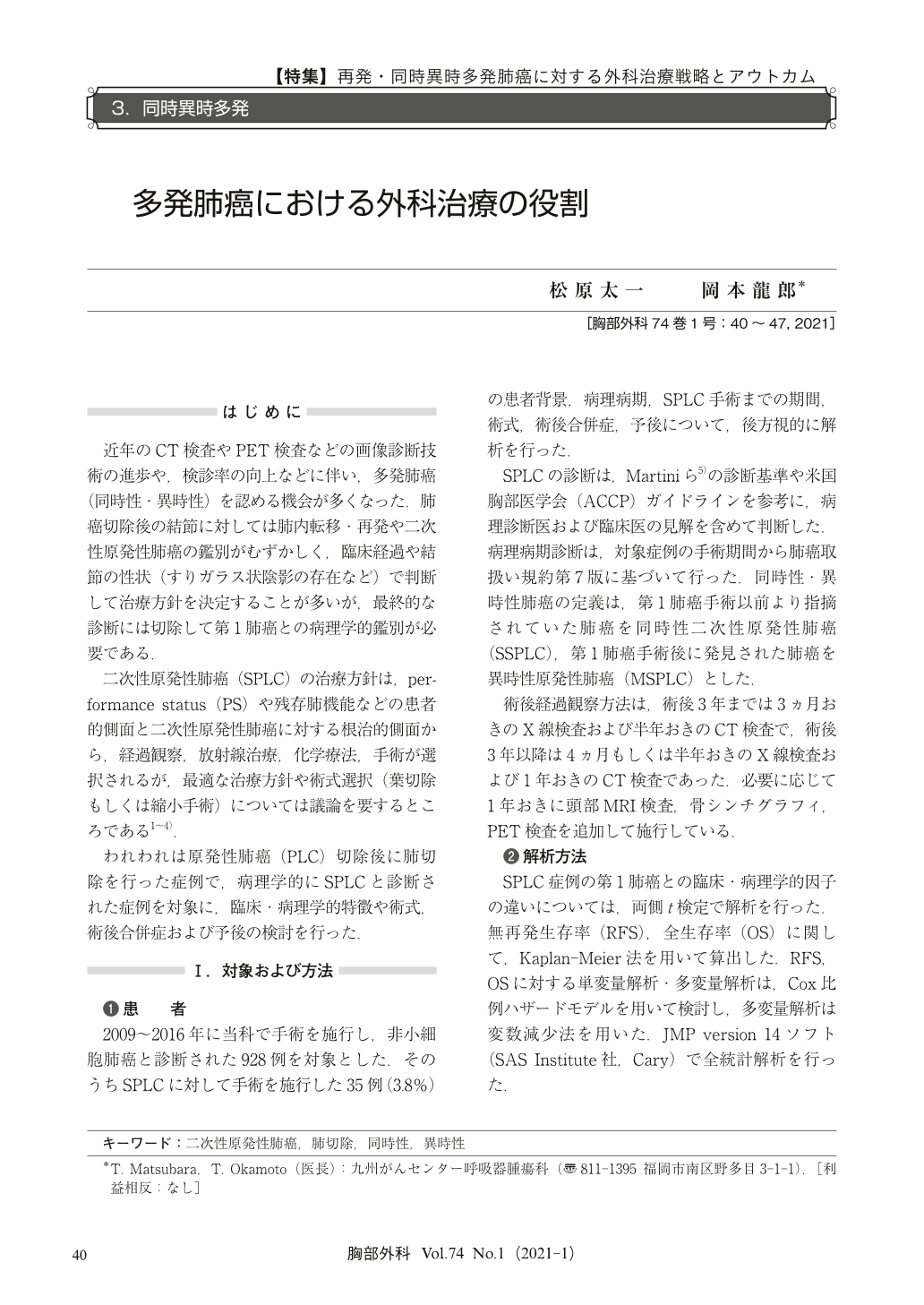Japanese
English
- 有料閲覧
- Abstract 文献概要
- 1ページ目 Look Inside
- 参考文献 Reference
近年のCT検査やPET検査などの画像診断技術の進歩や,検診率の向上などに伴い,多発肺癌(同時性・異時性)を認める機会が多くなった.肺癌切除後の結節に対しては肺内転移・再発や二次性原発性肺癌の鑑別がむずかしく,臨床経過や結節の性状(すりガラス状陰影の存在など)で判断して治療方針を決定することが多いが,最終的な診断には切除して第1肺癌との病理学的鑑別が必要である.
Objectives:To explore the clinicopathological and surgical characteristics and to determine the prognostic outcome of patients who underwent second pulmonary resection for secondary primary lung cancer (SPLC).
Patients:We retrospectively examined 35 patients who underwent second pulmonary resection for secondary primary non-small cell lung cancer from 2009 to 2016.
Results:The median age was 67 years and 54% of patients were male. Twenty-one patients were resected for synchronous disease and 14 were resected for metachronous disease. The median interval between first and second surgery was 9.8 months. Six patients underwent lobectomy twice for both lung cancers. Sublober resection was significantly performed at second surgery, and tumor size of SPLC was significantly smaller than that of first cancer. There was no significant difference for pathological stage between first and second cancer:27 patients were diagnosed as stageⅠat first surgery, and 33 were diagnosed as stageⅠat second surgery. The five-year recurrence free survival (RFS) rate was 74.1%, and five-year overall survival (OS) rate was 85.7%. There were no significant survival differences between synchronous and metachronous secondary cancer groups for RFS and OS. Surgical procedures and secondary cancer profile (synchronous or metachronous) were not associated with postoperative survival by univariate and multivariate analyses.
Conclusions:Surgical resection for SPLC may be tolerable if lobectomy is required for curative resection.

© Nankodo Co., Ltd., 2021


